It was announced as the first full-fledged interactive storybook available on a personal computer. The Manhole was the brainchild of brothers Rand and Robyn Miller, it was an adventure game and yet not an adventure game in the classical sense of the word, for while most adventure games before it had been very much linear parser and puzzle-driven experiences, The Manhole was just something completely different. It was a cute, whimsical, and crazy-in-a-good-way game taking place in a fantasy world where the player would be able to endlessly explore, there were no goals, no dead ends, only a world full of secrets, puzzles, and Easter eggs, a world that was unexpected and delightful. Things here didn’t have to make sense and you could literally play it for months on end and still experience new and magical things. While aimed at children and young-at-hearts, The Manhole spoke to everybody who loved to be captivated by imagination and curiosity.
The Manhole removed all clutter, like interface and navigation buttons, you would navigate by clicking on items or the environment, typically an action would happen or you would be transferred closer to the hotspot you clicked – sounds familiar, yes, this is actually the recipe for the behemoth the brothers would unleash on the gaming world 5 years later.
While Rand had been programming games before, his brother Robyn had been studying music and arts in high school, and while he was an incredibly talented artist he had no real experience with software development. Luckily the strength and potential of the Macintosh HyperCard environment allowed the two brothers’ talent to meet and mix in an extremely creative way.
Hypercard
Rand, besides being an experienced programmer, was a guy with a love for the Macintosh. He was working at a bank as a software engineer when Bill Atkinson’s HyperCard development kit was introduced for the Apple IIGS and Macintosh in 1987. HyperCard was a development environment aimed at creative and not hardcore programmers. The environment made it possible to create applications based on the concept of a stack of virtual cards, each card containing interactive objects, text fields, buttons, and GUI elements. Elements were a simple drag and drop and built-in navigation making it easy to switch from one card to another.
HyperCard came with HyperTalk, an object-oriented scripting language, aimed both at beginners and seasoned programmers – HyperCard was the perfect tool if you wanted to make an interactive story, with a quick turnaround, without drowning yourself in technical stuff.
Rand made contact with Robyn and sold him the idea of making a children’s software title. Robyn started drawing the images, with little or no planning at all. Surprisingly quickly a whole new world was emerging. Rand took Robyn’s images, tied them all together, and added the interactivity.
The Manhole
Rand and Robyn showed off their new creation to the public for the first time at the Hyper Expo in San Francisco in June of 1988 – yes this was an Expo dedicated just to the HyperCard development environment.
The version showed was a 5-floppy disk version in the name of Rand’s computer consulting business called Prolog.
It was here at the Expo the two brothers met Richard Lehrberg, Vice President of Product Development at Activision. Lehrberg took a copy of The Manhole with him for evaluation and showed it to Activision’s head of technology, William Volk, who was intrigued by the uniqueness of the game and signed Activision on as the publisher.
After the signing, the brothers formed their new company, Cyan Productions, a name which also can be seen on the cover of the versions published by Activision.
Activision published the original black-and-white Macintosh floppy disk version in 1988. It was received with great reviews and was highly recommended for children.
With more and more game developers striving for a movie-like experience, adding video, speak, and high-quality music, the floppy disk media was on its last legs. The advent of the CD-ROM a few years earlier with storage space equivalent to over 450 floppy disks made it the perfect medium to encompass the future of gaming.
Volk, who initially had seen the potential in The Manhole, had been experimenting with the CD-ROM technology for some time. He was now on the lookout for a title that would fit right into the promises of the new CD-ROM format and he didn’t have to look far, The Manhole was the perfect candidate.
When re-released for the Macintosh in 1989 The Manhole was the very first home computer game to be released on CD-ROM.
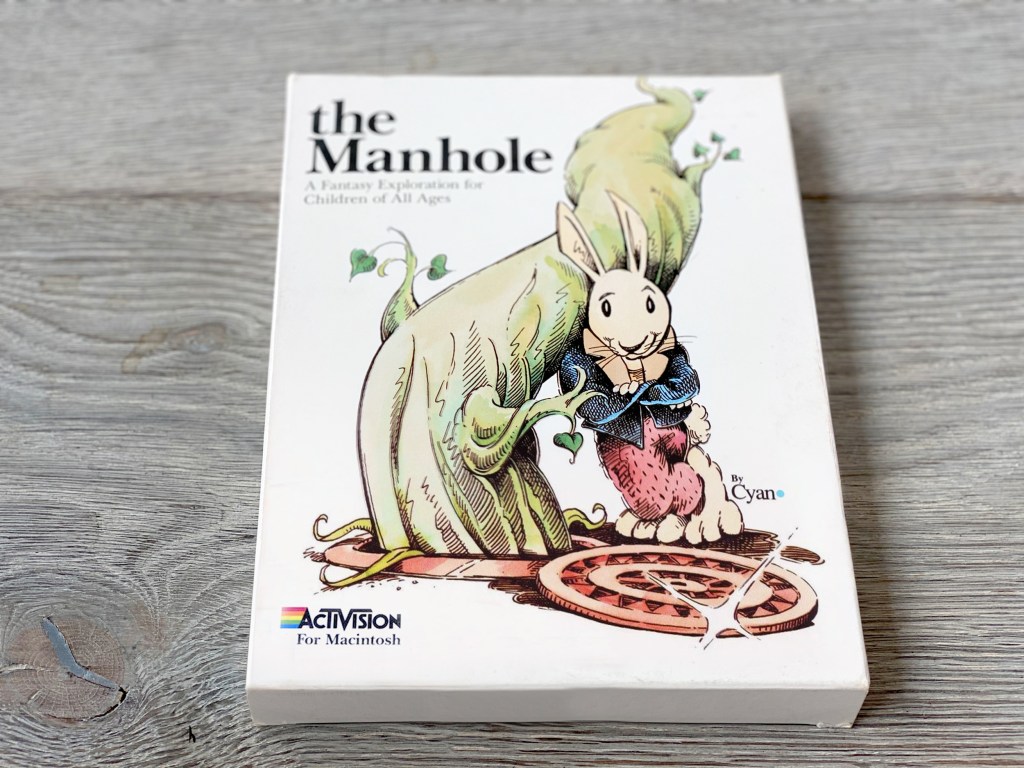
The CD-ROM re-release of The Manhole in 1989 for the Macintosh, was the very first computer game title to be released on CD-ROM
Also In 1989, the IBM/PC floppy version was released, this version was no small feat since the HyperCard wasn’t available on MS-DOS, this lack led to Activision developing their own custom engine called MADE, Multimedia Application Development Environment. A team of Activision artists redrew all of Robyn’s original black-and-white graphics in color.

The 5.25″ floppy disk version for MS-DOS, released in 1989.
A CD-ROM version for IBM/PC was released a year later in 1990. This version was basically the same as the floppy version but with a CD soundtrack to accompany you.
Later The Manhole was re-released for the IBM/PC twice, once in 1992 by Activision as The Manhole: New and Enhanced and again in 1995 as The Manhole: CD-ROM Masterpiece Edition published by Brøderbund.
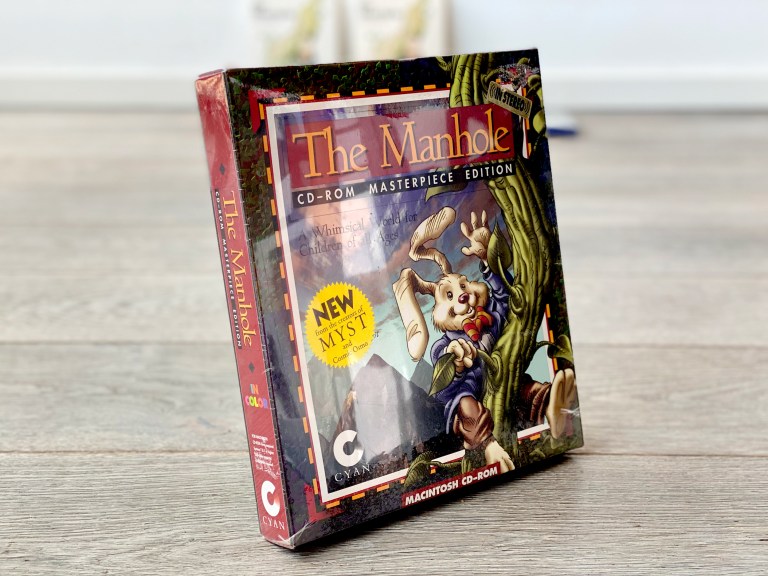
After Cyan’s Success with Myst, The Manhole was remade and released as The Manhole CD-ROM Masterpiece Edition in 1995, now with pre-rendered 3D backgrounds
Activision also took a shot at the short-lived and unsuccessful Tandy Memorex Visual Interactive System (VIS), known as the Tandy Video Information System. The VIS was an interactive, multimedia CD-ROM player produced by the Tandy Corporation from 1992 to 1994. The device worked as a set-top box for the TV and was very much similar in function to the Philips CD-i and Commodore CDTV systems. The VIS was only sold in Radio Shack and only sold a bit north of 10.000 units.
The VIS version of The Manhole was an enhanced version of the original and titled The Manhole – New, and Enhanced. The same version was also released for MS-DOS and Windows 3.1 in 1992.
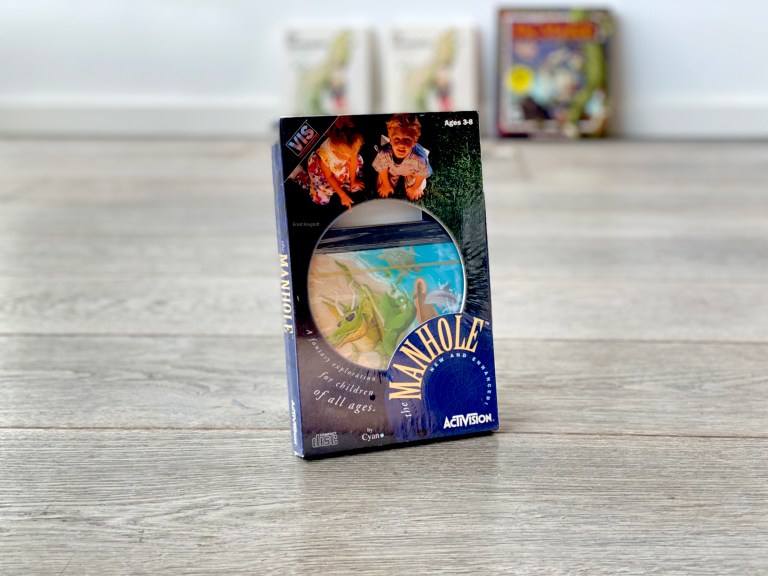
The rare VIS version of The Manhole, released for the Tandy Memorex Visual Interactive System in 1992

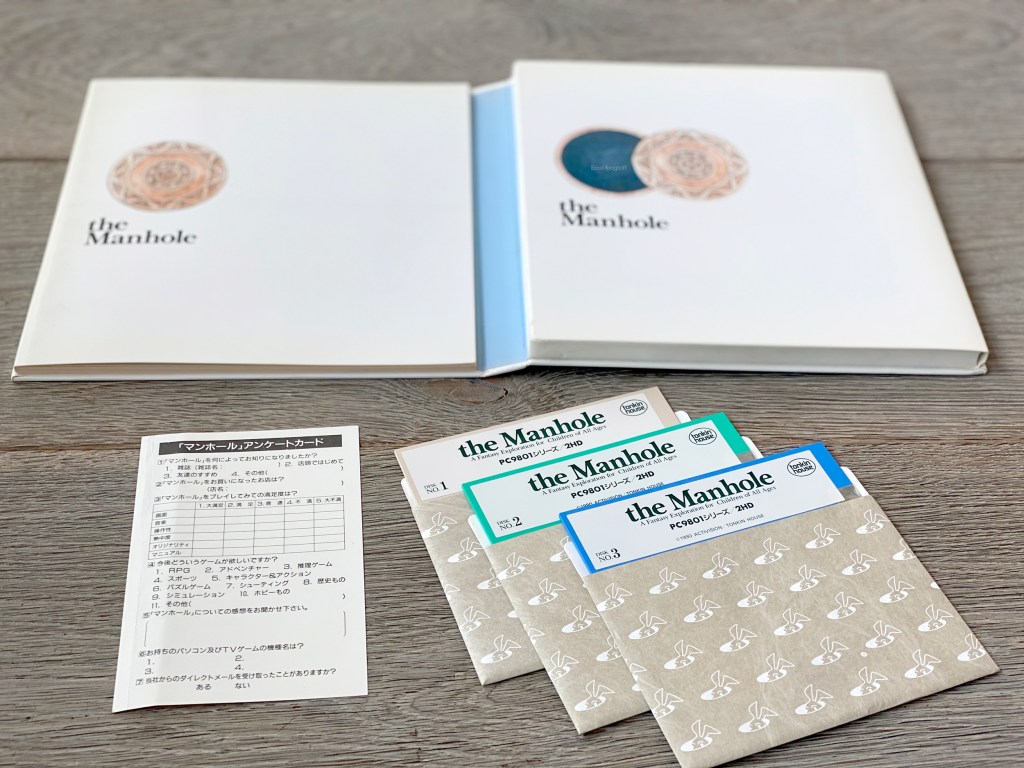

My absolute favorite version of the game is the extremely rare PC-9801 release, released as a children’s book, with beautiful pictures to accommodate the story. This version was published for the Japanese market by Tonkin House in 1990. Also, FM-Towns and PC-ENGINE versions were released around the same time, both with the choice of Japanese or English voices and texts
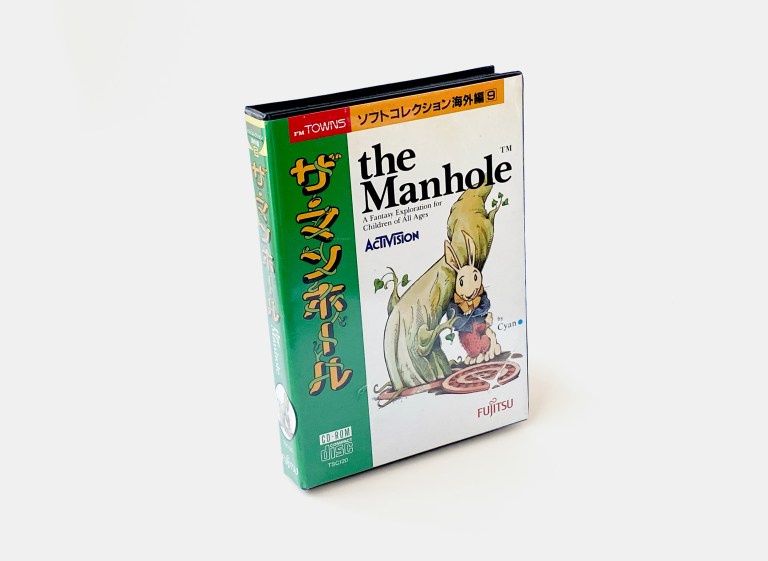
The Fujitsu FM-Towns release from 1990
Cyan and brothers Rand and Robyn would rise to world fame with their pre-rendered 3D adventure title Myst in 1993. Myst went on to be the best-selling PC game for almost a decade and sold well over 6 million copies.
In 1997 Riven, the sequel to Myst was released, but all this is for another article.



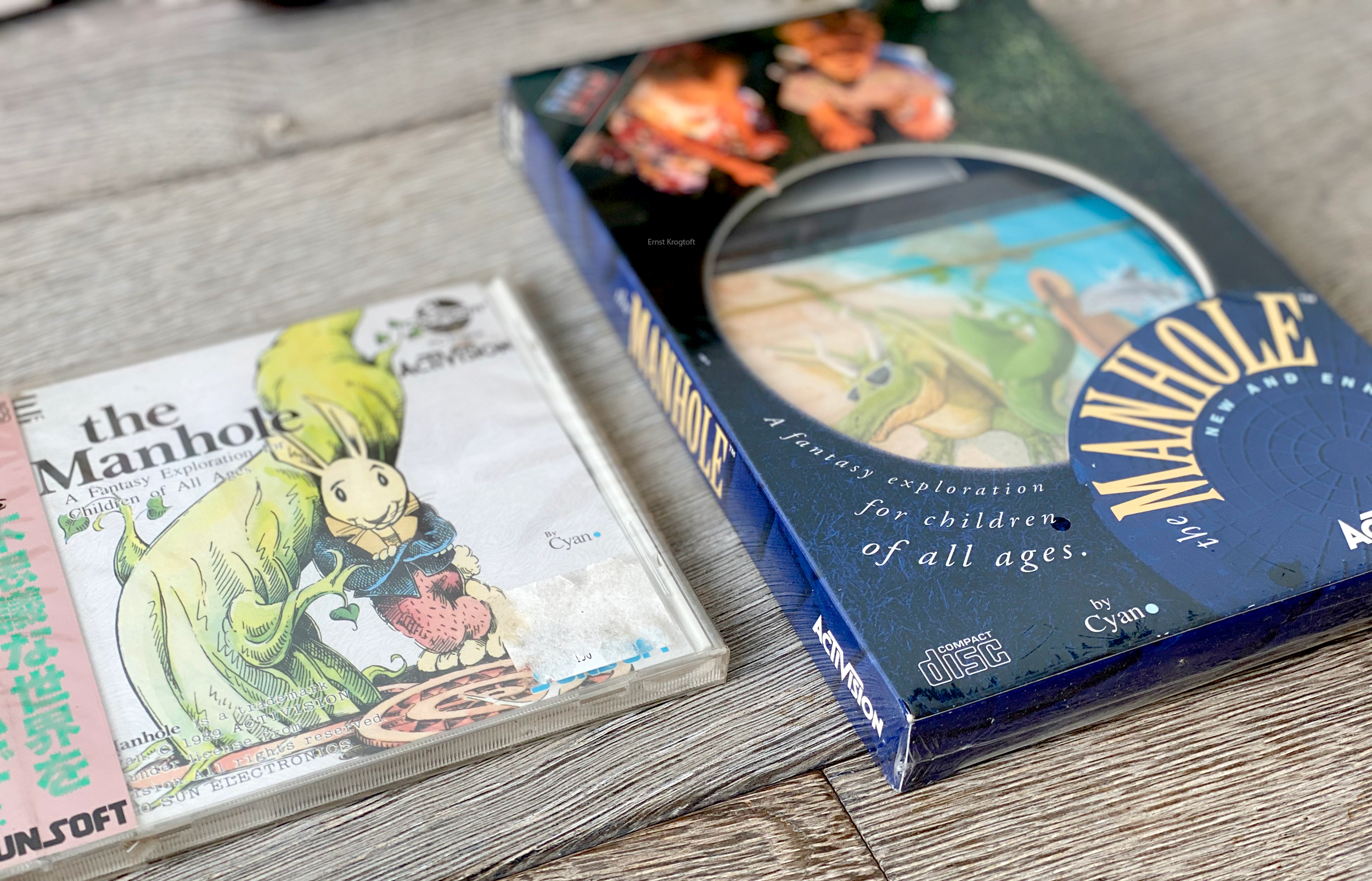

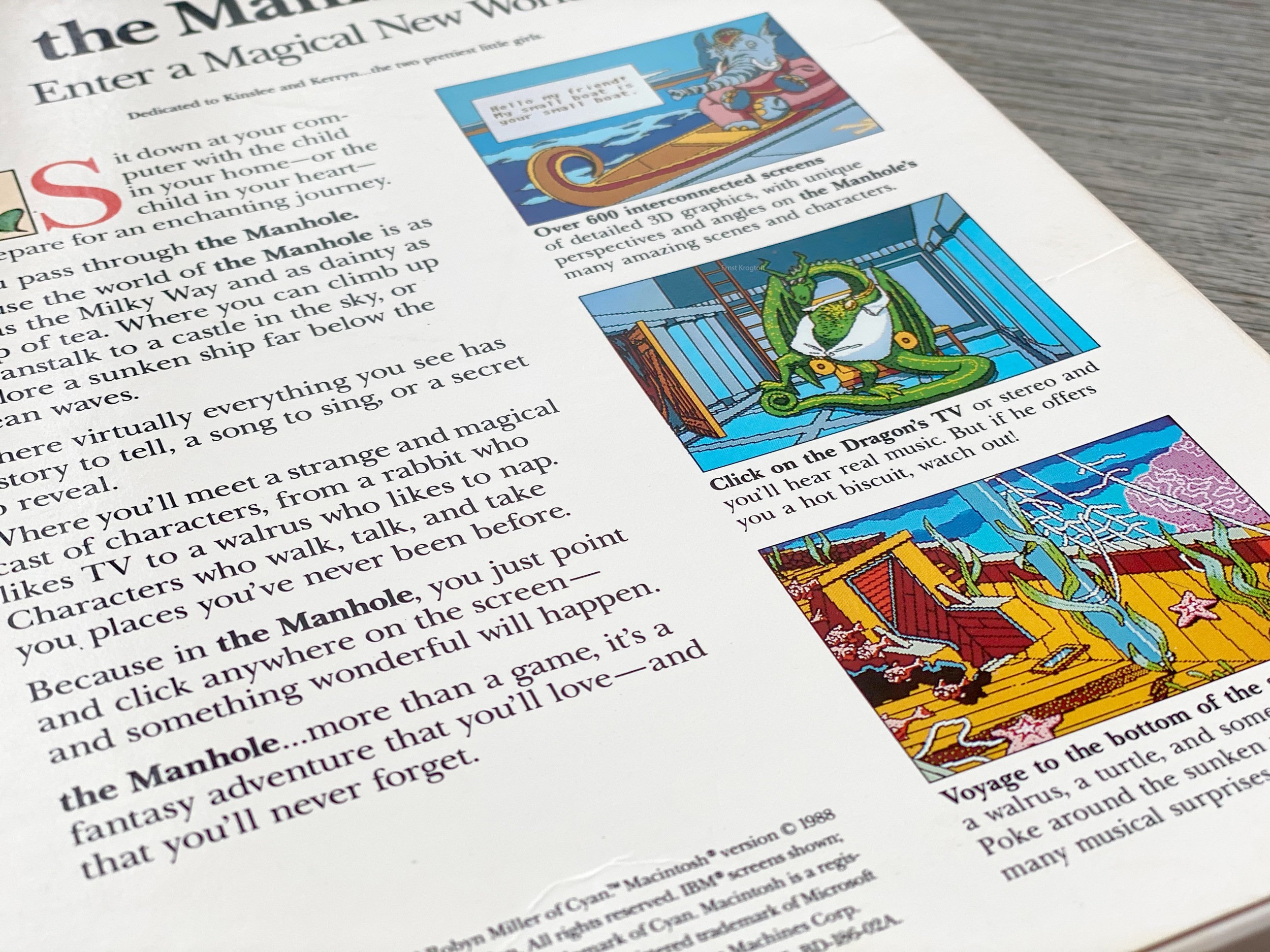





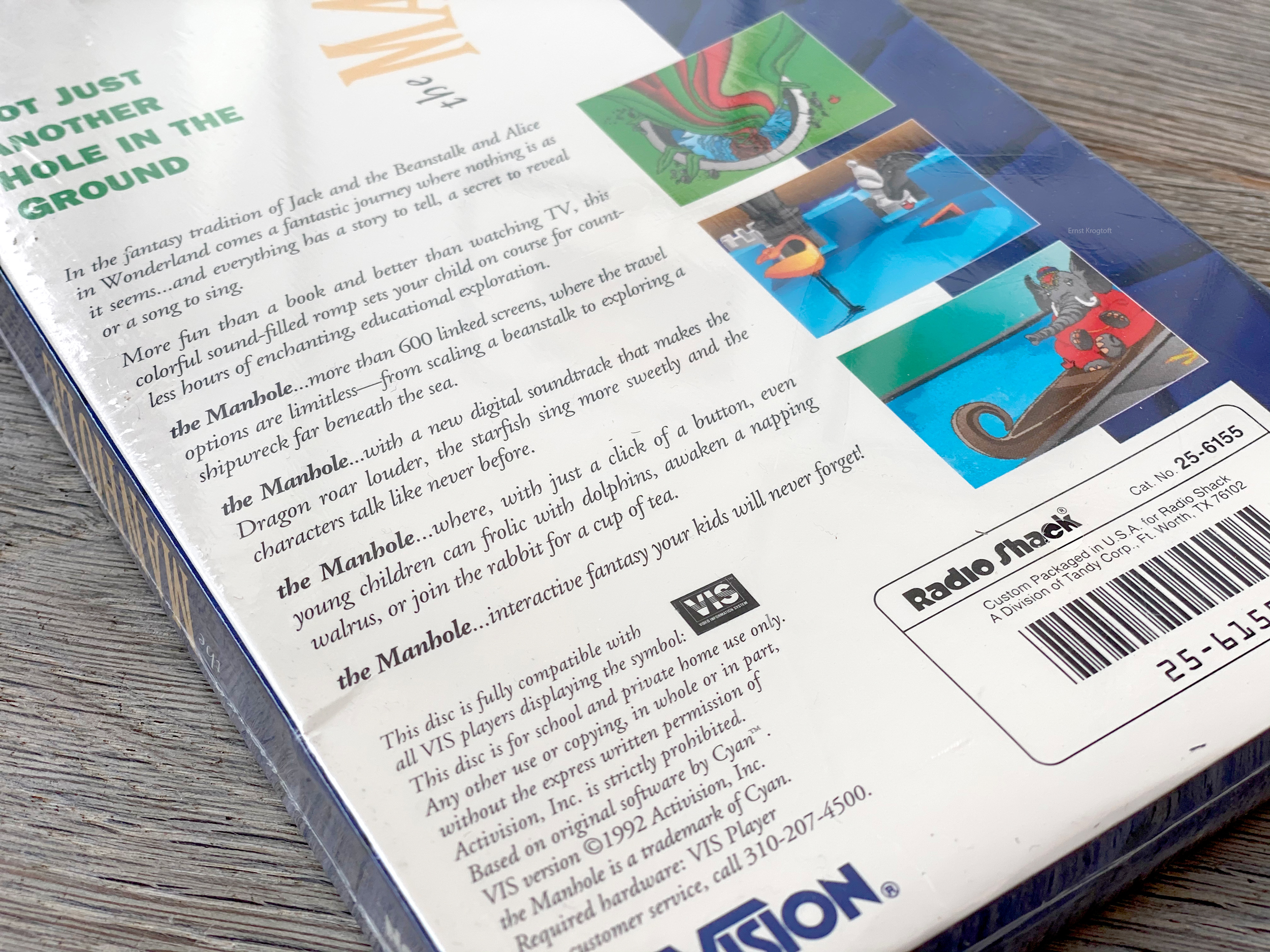



i have manhole on the vis. its pretty good compared to a lot of the stuff on the vis
I remember purchasing this game at the time Radio Shack started selling their first CD-ROM drive. The Manhole was the only game available so I purchased it even though I was 19 and it was geared towards kids. All I remember was “My small boat is your small boat. Please ride with me in my little boat.”
I’ve been trying to find an archive of this CD somewhere, never could find any proof it existed until now.
I have just been given a new unopened copy of the Manhole New and Enhanced version with 3.5” disks. Happy to give it to someone if anyone is interested. Same cover the bottom right in the first image at the top of this blog.
Hi Sally, thanks for the message:)
That’s very sweet of you, I’m not sure if anybody will see it since this post is a few years old. I’ll be interested but will, of course, pay for it (and shipping) then I could do a “giveaway” at some point on the blog.